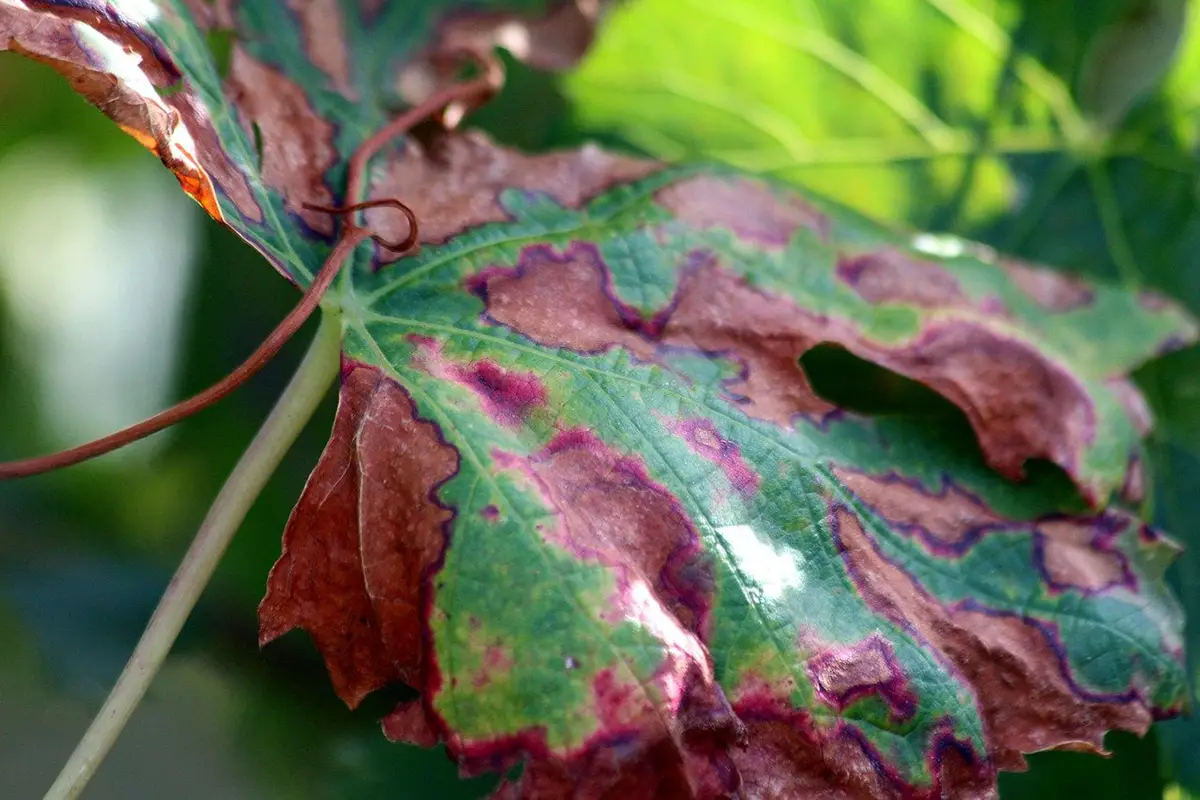

Did you know that plants also suffer from diseases, fungi and more pathologies? So thats it. Although vegetables are not capable of expressing themselves, at least under our perception, Yes, we can distinguish healthy plants from diseased or affected ones. There is a whole science that is dedicated to studying the pathologies of plants: Phytopathology.
In this article we will talk about the science called phytopathology, briefly explaining what phytology is and emphasizing the importance of these studies. If you are interested in the subject, I recommend that you continue reading.
What is phytology?


We must first clarify the meaning of the word. As you well know, “pathology” means disease. But what is phytology? Basically It is the branch of biology that studies plants and vegetables, also known as botany. The studies carried out on plants involve all possible aspects related to them: Classification, description, distribution, effects they have on the environment in which they are found, physiology, identification, morphology, reciprocal relationships and with other living beings and also Its reproduction.
Within botany we can distinguish the pure and applied botany. In the first case, the objective is to expand the knowledge we have about nature. Regarding applied botanical research, these serve to improve agricultural, pharmaceutical and forestry technology. In addition, there are several branches within botany, such as phytochemistry, phytography or plant pathology.
What is phytopathology?
As we have already mentioned above, phytopathology, also known as plant pathology, it is the science that diagnoses and controls plant diseases. It includes both studies related to infectious agents that attack plants and physiological diseases or abiotic disorders. However, damage caused by herbivores such as mammals or insects is not part of the science of plant pathology. Experts estimate that plant diseases cause a 10% loss of food production worldwide.
There are two types of factors that can cause diseases in plants: Biotic and abiotic. We will comment on both below.
Biotic factors


When we talk about biotic factors, we refer to living organisms that influence an ecosystem. Regarding plants, they can be affected by the following:
- Different types of mushrooms
- Prokaryotes (bacteria)
- Viruses and viroids
- Nematodes
- Protozoa
- Parasitic plants
All of these have the capacity to penetrate and diffuse into a plant host organism. In the event that abiotic factors are causing the phytopathology, it develops through a total of eight phases:


Related article:
Plant transpiration
- Contamination: The infectious agent approaches the host plant.
- Penetration: Then it penetrates the plant through healthy tissue, wounds or natural openings.
- Infection: The pathogen comes into contact with the cells of the penetrated plant.
- Incubation: This is the time interval between infection and the appearance of symptoms.
- Diffusion: The infectious agent spreads to other plant tissues.
- Reproduction: Inside the host plant, the pathogen begins to reproduce.
- Dissemination: New infectious agents disperse in the medium in order to colonize other plants.
- Survival: These pathogens remain in the environment as long as the conditions are not adequate to infect a new host plant.
Abiotic factors
On the other hand, diseases in vegetables can also be caused by abiotic factors. Namely: For natural physical reasons such as, for example, floods or fires. Human action is also included in this group, one of the most important being pollution. Thus, these are factors that do not directly attack the plant, if not its environment. In addition, on many occasions they could be avoided if proper care was carried out.
Between the natural factors are the following:
- Drought
- Freezing
- Floods
- Lack of nutrients
- Excess soluble minerals
- Salt deposition
- Wind
- Excess or lack of lighting
- Forest fires
- Poisoning caused by different chemical agents


Regarding the factors that involve human action we have these:
- Soil compaction
- Pollution, both air and soil
- Herbicides
- Lack of training of the people who handle the plants
What is the importance of plant pathology?


The importance of studies on plant diseases is vital, since this knowledge cannot be lacking in agriculture. Usually, the pathologies that affect the plants reduce the harvest and worsen the quality of the product. However, it is possible to save the crop by correct identification and in time to control the damaging agents.
Not only at the agricultural level is phytopathology decisive, Also sectors and industries that depend on agriculture may be affected. If plant diseases are not treated in time, they could cause economic losses that would end up affecting the whole of society and people’s standard of living. Obviously, the losses depend on the type of product, the plant species, the damaging agent and the time it takes to diagnose it.


Related article:
Dyeing plants
It is undeniable that plant pathologies have managed to change the habits of various populations, especially when abiotic factors are involved. What’s more, thanks to them new industries have been created, among them those that produce both machinery and chemicals to control and prevent plant and crop diseases.
Curiosities
Even since ancient times it was well known that plants could get sick. However, they used to attribute these pathologies to supernatural forces, especially the wrath of the gods. The first plant disease whose origin was discovered is tooth decay, also called wheat smut, caused by the pathogen Tilletia caries.
Another curious fact is that plant pathologists were the first to identify a virus. It is the tobacco mosaic virus (TMV). In addition, they invented the first fungicide in order to control a phytopathology. It is the fungicide Bordeaux mixture, which is basically a mixture of lime and copper sulfate.


Related article:
Charles Linnaeus
I hope this article has been helpful and informative. We must remember that it is everyone’s job to take care of the earth and its inhabitants, including plants, since without them we could not continue to exist.
